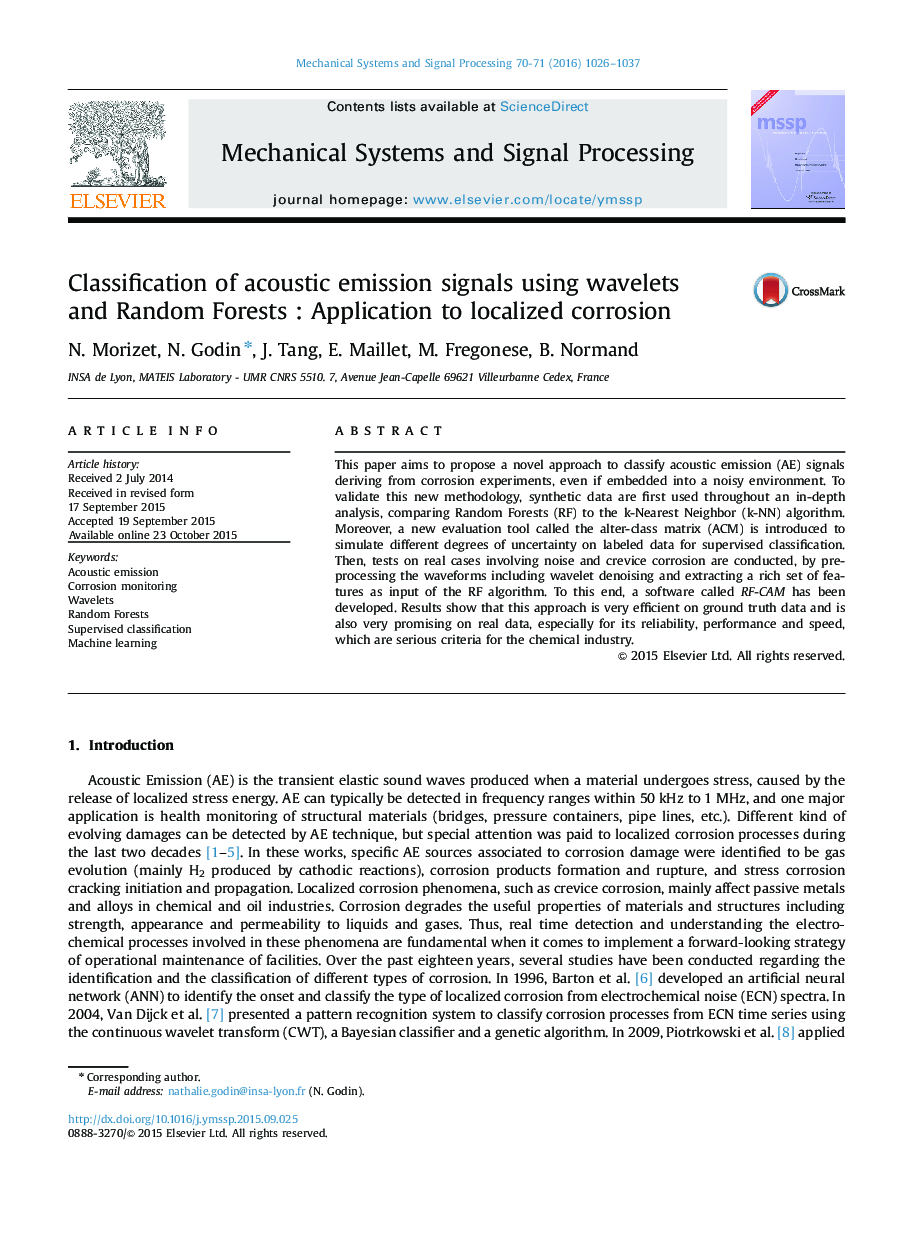| Article ID | Journal | Published Year | Pages | File Type |
|---|---|---|---|---|
| 565476 | Mechanical Systems and Signal Processing | 2016 | 12 Pages |
•Novel supervised analysis of acoustic emission signals using Random Forests.•Full signal preprocessing prior to waveform feature extraction.•New robustness evaluation tool (ACM matrix) for mislabeled data.•Introduction of a new decision rule (security voting).•Real time strategy for industrial applications (corrosion monitoring).
This paper aims to propose a novel approach to classify acoustic emission (AE) signals deriving from corrosion experiments, even if embedded into a noisy environment. To validate this new methodology, synthetic data are first used throughout an in-depth analysis, comparing Random Forests (RF) to the k-Nearest Neighbor (k-NN) algorithm. Moreover, a new evaluation tool called the alter-class matrix (ACM) is introduced to simulate different degrees of uncertainty on labeled data for supervised classification. Then, tests on real cases involving noise and crevice corrosion are conducted, by preprocessing the waveforms including wavelet denoising and extracting a rich set of features as input of the RF algorithm. To this end, a software called RF-CAM has been developed. Results show that this approach is very efficient on ground truth data and is also very promising on real data, especially for its reliability, performance and speed, which are serious criteria for the chemical industry.
